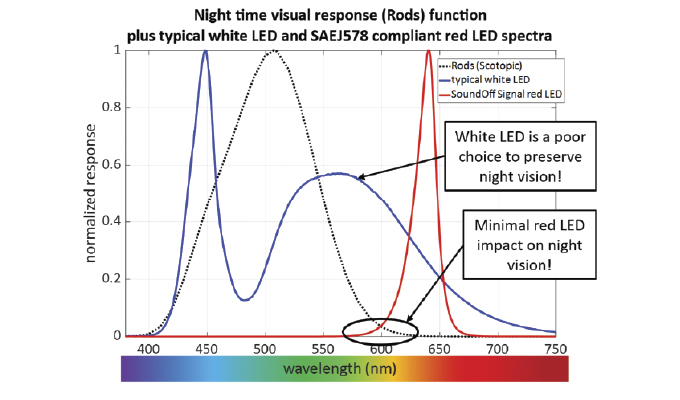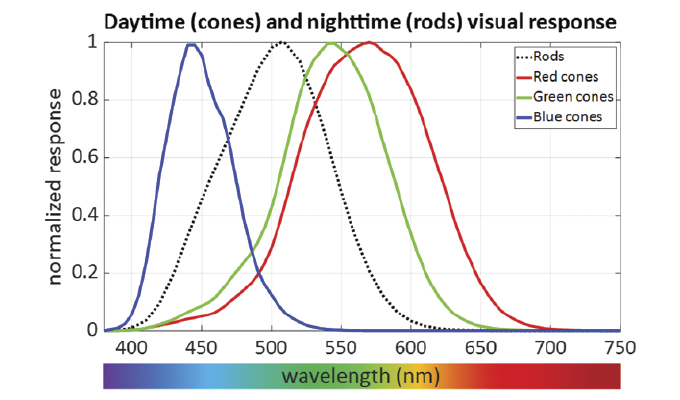For fleets that operate at night or in low-light scenarios, proper lighting is an absolute must—not only to see the task at hand, but also for the safety of the workers and those in the environment around them. However, safety lighting isn’t just for the outside of the fleet vehicle. Doug Baker, senior vice president of technology and chief innovation officer at SoundOff Signal, reveals the science behind the company’s lightning solutions inside a vehicle at night and how to best preserve night vision.
Human eyes have a slow adjustment following exposure to white or other high levels of visible light. This can make it challenging to view objects and information when the lighting conditions change rapidly. However, if we are exposed to low levels of red light, human eyes can adjust quickly to dark condition viewing, allowing fleet operators to work easily and safely when moving from a properly lighted workspace to a low-light area. An example of these scenarios include interior vehicle lighting. There is a quick anatomy lesson to explain this science.
HUMAN VISION
“Our vision uses a combination of chromatic (color) discernment and light/dark discernment ‘sensors’ in our eyes,” Baker explains. “These are typically referred to as cones and rods. Our brains automatically process all of this information together, even though it comes from different types of optical sensors.”
Humans have the ability to see color through a combination of different cones, which are generally red, green, and blue sensitive. The light we can see is measured as 400 to 700 nanometers (nm) wavelength range (Figure 1), which is a small slice of the energy across the wider electromagnetic spectrum. Under daylight conditions, the brain focuses on signals from the cone sensors to provide high-resolution color vision and ignores the saturated signal from the ultra-light sensitive rods. In low-light conditions, only signals from the ultrasensitive rods are processed to provide grayscale visual sensation. We experience this at night by seeing objects but not with much color discernment.

USING RED LIGHT
With the understanding that our rods are the critical sensor for night vision, we start to see the strategy to “save” those sensors for when we need to see in the dark without waiting for a photo-chemical adaptation delay in the eye.
“Any sudden overload to the rod sensor will temporarily reduce the responsiveness (low-light night vision) due to the highly stimulated or saturated rod sensor,” Baker inserts.
This is exacerbated by the fact our Scotopic vision is most sensitive from low to mid wavelengths (from blue to green wavelengths). For example, flipping the lights off in a room will cause a slow response in your vision as they adjust to the darkness and the same holds true for the opposite when suddenly going from the dark to lights on.
Because of this effect, small amounts of red light do not stimulate the rod very much, shown in Figure 2 by the small amount of overlap between the energy in a red LED and the rod sensitivity curve. In contrast, “white” light contains energy in all the blue, green, and red regions. White light, even in low amounts, does stimulate the rod sensor.
Using science to drive its engineering, SoundOff Signal’s lighting solutions include controllers, allowing for custom management of the LED lights. These purpose-driven tools are designed to help everyone get their job done effectively and safely.
The information in this article was provided by SoundOff Signal. Find out more, visit www.soundoffsignal.com.




